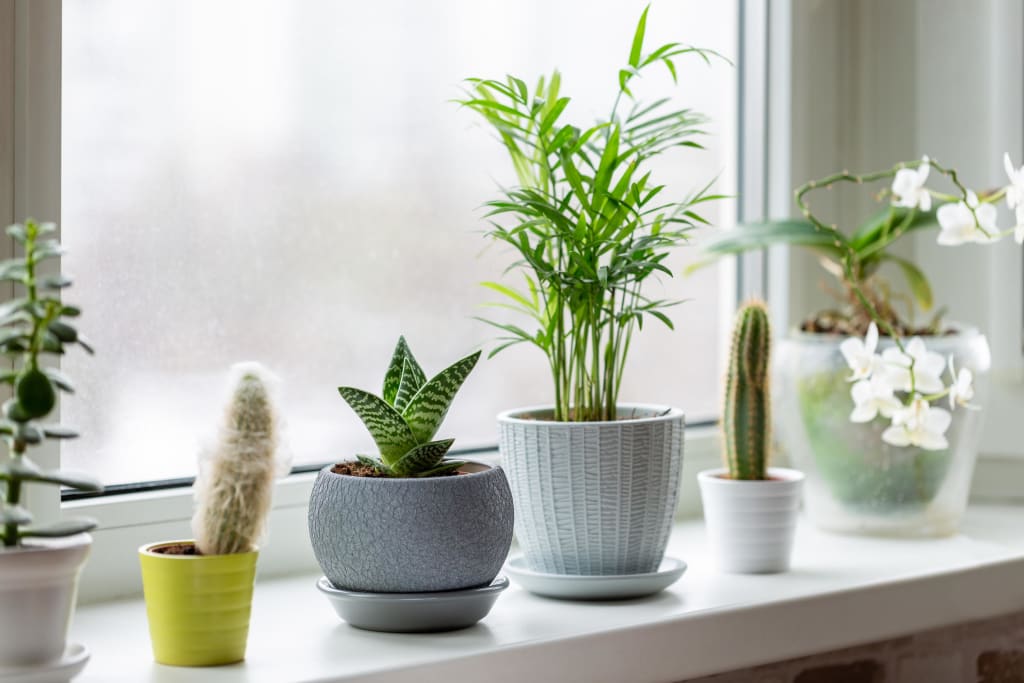5 Mistakes People Make With Their Indoor Plants
Indoor plants are the best indoor air purifiers you can ever have in your house- they are sustainable and Eco-friendly. The plants absorb toxic gases and give us the oxygen that we so desperately need.

Indoor plants are the best indoor air purifiers you can ever have in your house- they are sustainable and Eco-friendly. The plants absorb toxic gases and give us the oxygen that we so desperately need. And because our world is filled with air pollutants, and for the fact that we cannot live without clean breathing air, you cannot ignore the need for these natural air purifiers in your home. Air quality aside, we need indoor plants for their synthetic beauty. They bring in the beauty of nature into our interior design, dramatically transforming our living spaces.
But even with their obvious benefits, there is one concern that prevents so many people from keeping indoor plants in their homes: The difficulty of taking care of these plants so they thrive. People complain constantly that their indoor plants die within days even when they do their level best to keep them healthy. Unknown to many, indoor plants die after the homeowners make one of the following 5 mistakes:
1. Acquiring unsuitable plants
A good indoor plant can survive in low light. If a plant needs the light intensity and quality of sunlight to grow, then no matter how you pamper it, it will eventually die when placed indoors. Some homeowners try to gamble with such plants by placing them near windows and other natural light sources, but they fail most of the time- the plant may survive but it definitely will not be as healthy as it could have been had it been placed outside.
Another important quality that an indoor plant must have is the ability to tolerate low humidity. Not many plants can thrive in the ever-dry indoor air no matter how you water them. Lastly, as much as it sounds appealing to have an aggressive plant that grows faster and stronger than other plants, you must choose a plant that doesn’t grow out of control. The last thing you want is a plant that quickly outgrows your available space.
2. Over watering
All plants aren’t the same. You need to know whether your plants need lots of water or they can survive within dry soil. Most succulents and cacti will die when watered too much. In most cases, plants with broad and thick leaves are designed to survive for months without water- you only need to water them at most once a month. Plants with tiny leaves, on the other hand, must be watered weekly otherwise they will dry quickly.
3. Choosing the wrong grow lights
One of the most important factors to consider when choosing the right grow lights for your indoor plants is the type of plants you will be growing and their lighting needs. Another consideration would be whether you want to grow the plant all year-round or it is just a seasonal thing. That will help you choose the lights with just the right durability. How tall you expect the plants to get and your intended location of the plants should also advise your eventual decision.
4. Not feeding your plants
If you use fertilizer on your outdoor plants, why would you overlook its importance when it comes to indoor plants? All plants need food to grow. In fact, unlike outside where plants are fed in part by Mother Nature, indoor plants are totally dependent on the water, food, and lighting you provide them with. Take care of these plants twice as much as you would an outdoor plant. It is best to use organic liquid fertilizer for indoor plants.
5. Exposing them to too much light
Some plants do not do well under too much light, especially bright and direct sunlight. Too much light is only essential for plants that have a high tolerance to direct sunlight such as cacti. Ensure that you control the amount and intensity of direct sunlight reaching your indoor plants and focus more on providing them with the softer indirect sunlight, for example, a sunlight ray reflected on a wall to the plant. You can also diffuse a ray through a veil to lower its intensity.
Conclusion
Keeping your indoor plants happy and healthy will require you to actively take part of their growth- not just watering and watching them grow. Ensure that you research on how to best take care of your specific plant because each plant has its unique watering, feeding, and lighting needs.
About the Creator
Flora Mayer
Flora is a young and ambitious who has been researching self-development for the past two years and is now off traveling the world. She helps tourists with free walking tours in London - so get in touch with her if you want a special tour.





Comments
There are no comments for this story
Be the first to respond and start the conversation.